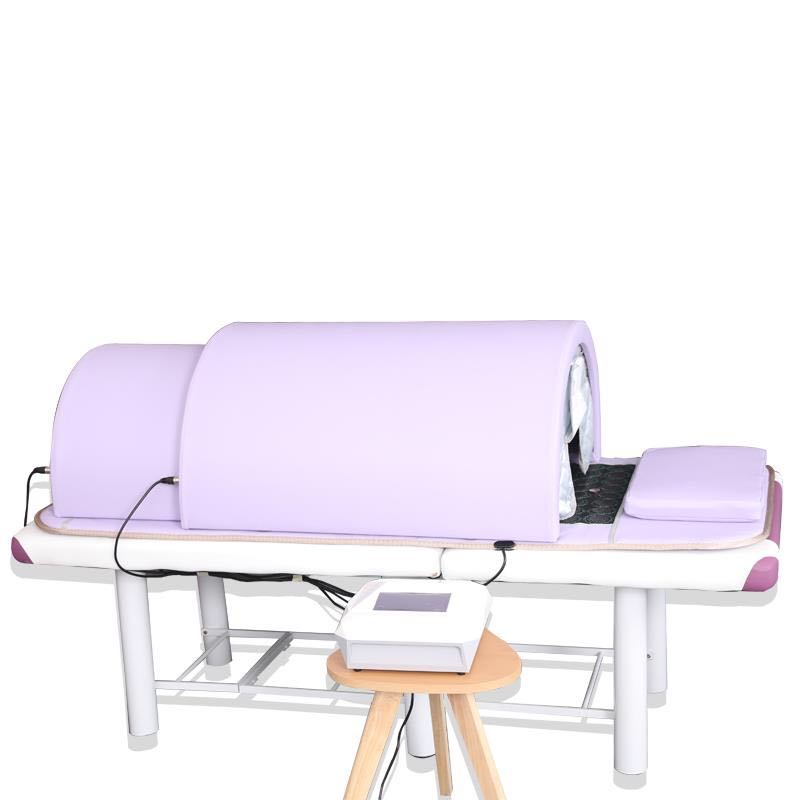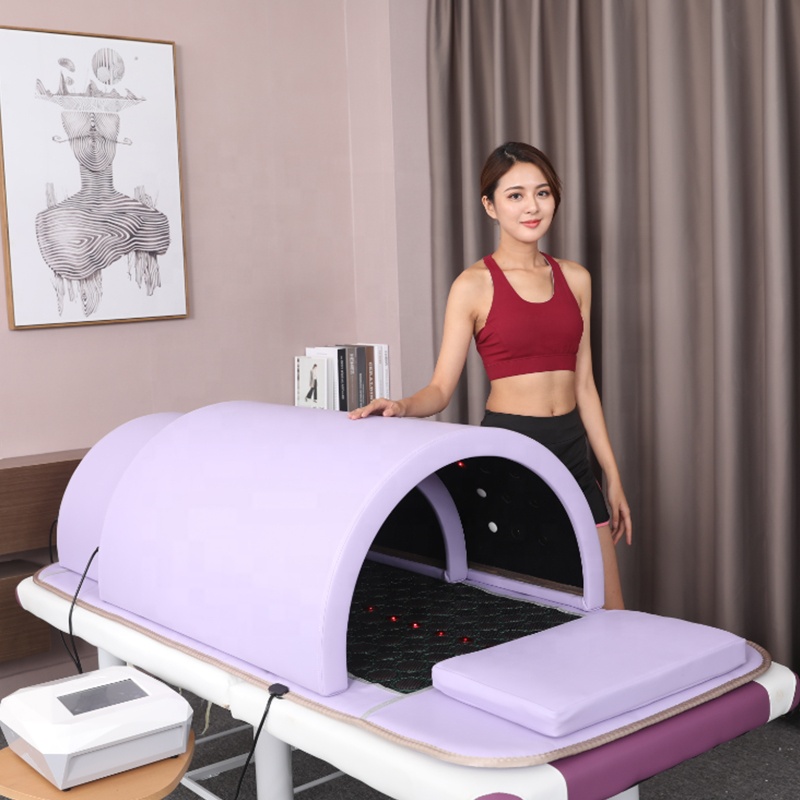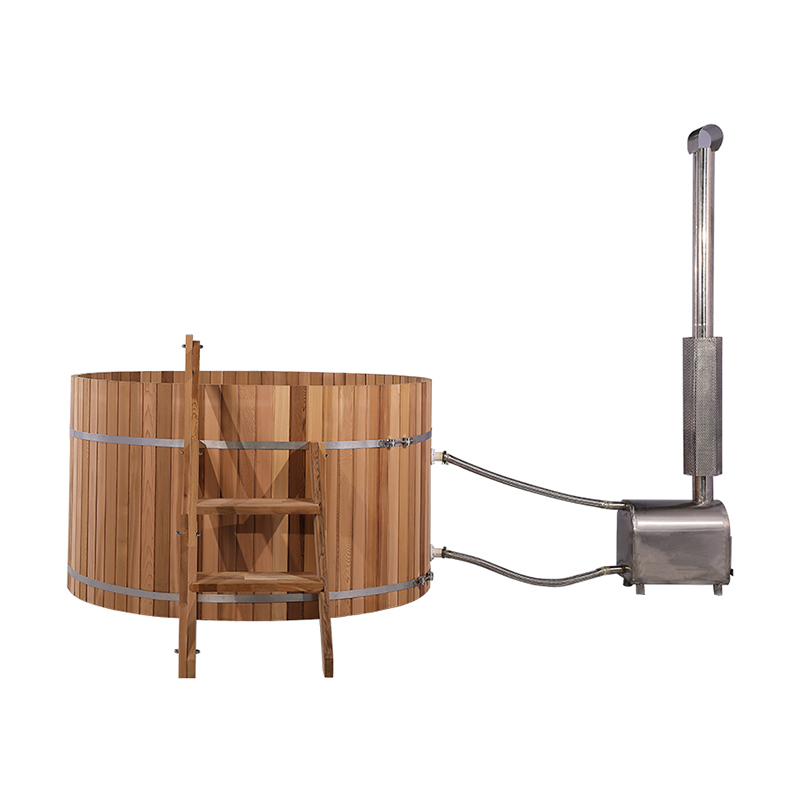Step into the warm embrace of a sauna and experience the healing power of sauna therapy. Whether you're seeking rejuvenation, relaxation, or both, this guide will reveal the secrets of this ancient practice and help you reap its incredible benefits.

Sauna therapy has been cherished for centuries by cultures around the world. As you sit in the warm heat, your body releases toxins, your muscles relax, and stress melts away. It's an experience that promotes physical well-being, mental clarity, and emotional balance.
In this comprehensive guide, we'll dive into the science behind sauna therapy and explore its many benefits. From improved cardiovascular health to enhanced skin radiance, we'll reveal how regular sauna therapy can transform your overall well-being. You'll also discover tips for maximizing the benefits of sauna use, from proper sauna etiquette to the best time and duration for your personal needs.
Whether you are an experienced sauna lover or a beginner, get ready to relax, rejuvenate and embark on a healing journey with sauna therapy. Step into the sauna and let your journey to wellness begin.
History and Origins of Sauna Therapy
Sauna therapy has a rich history that dates back centuries. The practice originated in Finland, where saunas have played an important role in Finnish life. Finns believe that the sauna is not just a place to purify the body, but also a sacred space used for spiritual and social gatherings.
The popularity of sauna therapy has also spread to other cultures, including Native Americans, Russians, and Turks, each with their own unique practice. For example, in Native American cultures, sweat rooms are used for spiritual cleansing and healing rituals. In Russia, bathhouses are places to socialize, relax, and improve overall health.
Today, sauna therapy has become a global phenomenon, with modern sauna designs designed to suit different preferences and needs. From traditional wood-heated saunas to infrared saunas, the variety of options allows individuals to experience the healing power of heat therapy.
Health Benefits of Sauna Therapy
Sauna therapy offers a wide range of health benefits that can improve both physical and mental well-being. One of the most notable benefits is detoxification of the body. As the body sweats in a sauna, toxins are drawn out through the skin, promoting a healthy and efficient detoxification process.
Regular sauna therapy also has a positive impact on cardiovascular health. The heat in a sauna causes blood vessels to dilate, improving circulation and lowering blood pressure. This can reduce the risk of cardiovascular disease, such as heart attack and stroke.
In addition to cardiovascular health, sauna therapy can relieve pain and promote muscle relaxation. The heat from a sauna can help soothe sore muscles and joints, reduce inflammation, and ease symptoms of conditions such as arthritis and fibromyalgia.
Additionally, sauna therapy has a positive impact on mental health. The heat and relaxation experienced in a sauna can help reduce stress, anxiety, and depression. Sauna therapy has been shown to release endorphins, natural “happy hormones” that help promote feelings of well-being and relaxation.
How Sauna Therapy Works
Sauna therapy works by exposing the body to high temperatures, which typically range between 150 and 195 degrees F. These temperatures cause the body to sweat profusely, releasing toxins and opening the pores.
As the body sweats, blood vessels dilate, increasing blood flow and delivering oxygen to muscles and organs. This enhanced circulation helps remove metabolic waste and promotes healing and recovery.
Sauna therapy also activates the body's natural cooling mechanisms. When the body gets hot, it responds by increasing sweating, which evaporates and cools the skin. This process helps regulate body temperature and prevents overheating.
Another key mechanism of sauna therapy is the activation of the parasympathetic nervous system, also known as the "rest and digest" system. The heat and relaxation in the sauna stimulate the parasympathetic nervous system, promoting a state of calm and relaxation.
Different Types of Sauna Therapy
There are several different types of sauna therapy to choose from, each offering unique benefits and experiences. A traditional sauna, also known as a Finnish sauna, is heated by a wood or electric stove and relies on high temperatures and low humidity to create a sauna environment.
Infrared saunas use infrared heaters to emit radiant heat that is absorbed directly by the body. This type of sauna therapy is often favored by those who cannot tolerate the high temperatures of traditional saunas or those who want a gentler, more gradual heat experience.
A steam sauna, also called a steam room or Turkish bath, has high humidity and lower temperatures than a traditional sauna. These saunas use a steam generator to produce hot steam, creating a moist and relaxing environment.
Portable saunas are another great option for those who want to enjoy sauna therapy at home. These compact and easy-to-use saunas offer the benefits of sauna therapy without the need for a dedicated sauna room.
Preparing for Sauna Therapy
Before entering a sauna, it is crucial to prepare your body and mind in order to experience the best results. First, make sure to drink plenty of water before the sauna to ensure that you stay properly hydrated throughout the process. Avoid eating heavy meals or drinking alcohol before the sauna as they may interfere with the sweating process and cause discomfort.
When entering the sauna, bring a towel to sit or lie on to absorb sweat and prevent direct contact with the sauna seat. It is also a good idea to bring another towel to wipe the sweat off your body and face during the session.
Most importantly, listen to your body and rest when necessary. If you start to feel dizzy or light-headed, you should leave the sauna and cool down immediately. Remember, sauna therapy is supposed to be a relaxing and pleasurable experience, so make sure to prioritize your comfort and well-being.
Safety Precautions and Guidelines for Sauna Therapy
While sauna therapy is safe for most people, there are some precautions to take to ensure a safe and enjoyable experience. First, consult your healthcare provider before starting sauna therapy, especially if you have any existing health conditions or are taking medications.
It is important to know your body's limits and avoid staying in the sauna for too long. Start out by keeping to short sessions of 10-15 minutes and gradually increase the duration as your body adjusts to the heat. Remember, the goal is to relax and enjoy the benefits of sauna therapy, not to overstress your body.
To prevent dehydration, remember to drink plenty of water before, during, and after your sauna session. Fluid retention is essential to maintaining proper hydration, especially when sweating profusely.
Finally, always maintain good personal hygiene in the sauna. Shower before entering the sauna to remove any lotions, oils, or dirt from your skin. Also make sure to sit on a towel to avoid direct contact with the sauna seat to reduce the spread of germs.
Incorporate sauna therapy into your wellness regimen
To fully benefit from sauna therapy, it's important to incorporate it into your daily wellness routine. First, determine the frequency and length of sauna sessions that are right for you. For beginners, 2 to 3 times a week for 10-15 minutes each session is a good starting point. As you become more comfortable, you can gradually increase your sauna time and frequency.
Consider combining sauna therapy with other relaxation techniques, such as meditation or deep breathing exercises. This can enhance the overall relaxing and stress-relieving effects of the sauna.
It’s also important to listen to your body’s reactions and adjust your sauna routine appropriately. If you’re feeling fatigued or unwell, it may be best to skip a sauna session and prioritize rest and recovery.
Sauna Therapy Products and Equipment
When it comes to sauna therapy, there are a variety of products and equipment that can enhance your experience. From sauna accessories to sauna oils and fragrances, these products can add an extra layer of relaxation and luxury to your sauna sessions.
Sauna accessories such as sauna brushes, towels and pillows can help create a comfortable and enjoyable sauna experience. Sauna oils and fragrances can be used to create a soothing aroma atmosphere that enhances relaxation and promotes a sense of well-being.
Infrared sauna blankets are another popular option for people who prefer the convenience of portable sauna therapy. These blankets use infrared heat therapy technology to give you a sauna experience in the comfort of your own home.
When choosing sauna products and equipment, it’s important to select high-quality and eco-friendly options. Look for products made from natural materials and free of harmful chemicals to ensure a safe and sustainable sauna experience.
Conclusion: Embrace the restorative benefits of sauna therapy
Sauna therapy is not only a relaxing and pleasurable experience, it is also a powerful tool for promoting overall health and well-being. From its ancient origins to modern practice, sauna therapy has stood the test of time with its numerous benefits.
By incorporating sauna therapy into your wellness regimen, you can unlock a world of rejuvenation and relaxation. From detoxification and improved cardiovascular health to pain relief and increased mental clarity, the healing powers of sauna therapy are endless.
So whether you decide to visit a traditional sauna, invest in an infrared sauna, or create your own sauna paradise at home, embrace the transformative benefits of sauna therapy. Step into a sauna and let the healing warmth carry you into a blissful state of restoration and relaxation. Your body, mind, and soul will thank you.



